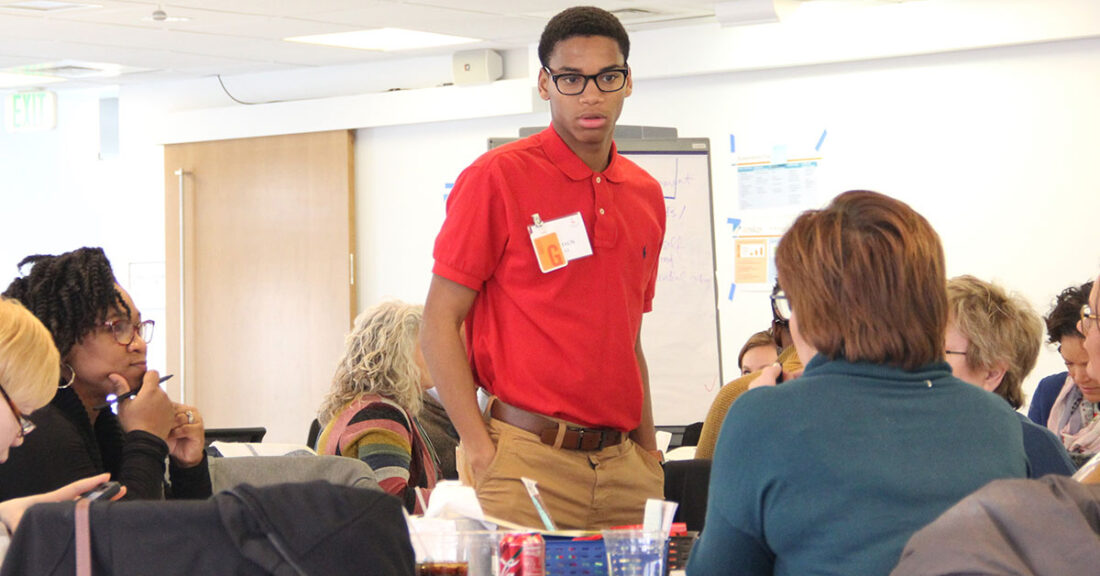The Jim Casey Initiative Advances Results Count

To accelerate measurable, equitable improvements for youth in foster care as they become adults, the Foundation’s Jim Casey Youth Opportunities Initiative® is working to expand the use of the philanthropy’s Results Count™ leadership methodology. The Jim Casey Initiative is pursuing this approach along with seven national organizations that are building their own capacities to use Results Count tools and skills and to spread this approach throughout their respective networks. The organizations are on the path to become the first Results Count hubs.
Four sites from the Jim Casey Initiative’s 17-state network — Georgia, Indiana, Iowa and Mississippi — were selected as the initial Results Count cohort. Each site sent a team that participated in six two-day seminars, where they learned and applied the five core competencies and two foundational frameworks of Results Count.
In January 2019, all the Jim Casey Initiative sites began the implementation of their three-year results and equity plans, each aligned with the Jim Casey Initiative’s priority indicators for youth transitioning to adulthood: (1) permanency, (2) stable housing, (3) educational success and economic security and (4) pregnancy prevention and parenting support. “The work of the sites is broader than just its lead agency,” says Leslie Gross, director of the Jim Casey Initiative. “The lead agencies work in partnership with young people, the child welfare system, service providers, advocates and others to move their plans.”
In Georgia, where the Multi-Agency Alliance for Children (MAAC) is the Initiative’s lead agency, the Results Count work focuses on educational success for students in foster care, grades 7 through 12, in Fulton and DeKalb counties. A rigorous analysis of the factors that contribute to success revealed that educational achievement for youth in foster care was influenced by how stable their foster-care placements were and whether they were connected with a permanent family. This insight has helped the site improve a young person’s ability to stay with a family while in foster care and his or her success in school.
Increasing equitable opportunities and outcomes for all children is central to the work of the Foundation. For social sector leaders, fulfilling this commitment requires being able to disaggregate data to reveal differences by race or ethnicity and to identify root causes of issues. “Results Count has fine-tuned the way I look at things,” says Victoria Salzman, who leads the Initiative’s Results Count work in Georgia. “The process allows for ‘speaking the unspeakable’ about equity issues.”
Youth engagement is another part of the Results Count work. Eddye Vanderkwaak, a Jim Casey Initiative Young Fellow, served on the Initiative’s Results Count planning team, and each site had a young leader who had experienced foster care. “Results Count is a really focused, intentional learning opportunity that directly impacts the work in our sites and in our careers,” says Vanderkwaak, lead organizer for Foster Youth in Action.
MAAC’s Victoria Salzman also notes the ripple effects of participating in the Results Count seminars. “This has been a great process for our team,” she says. “It’s going to help child welfare professionals, providers and others embed the Results Count approach into their practice, look at different opportunities to apply it and see some real change in outcomes for our young people.”
Over the next two years, the Jim Casey Initiative will continue to build the Results Count skills within its network and to support the sites in implementing and refining their three-year results and equity plans. “With this approach, we can make sure we are working deliberately toward making the most powerful contribution possible to helping all young people transition from foster care to adulthood,” Gross said.





